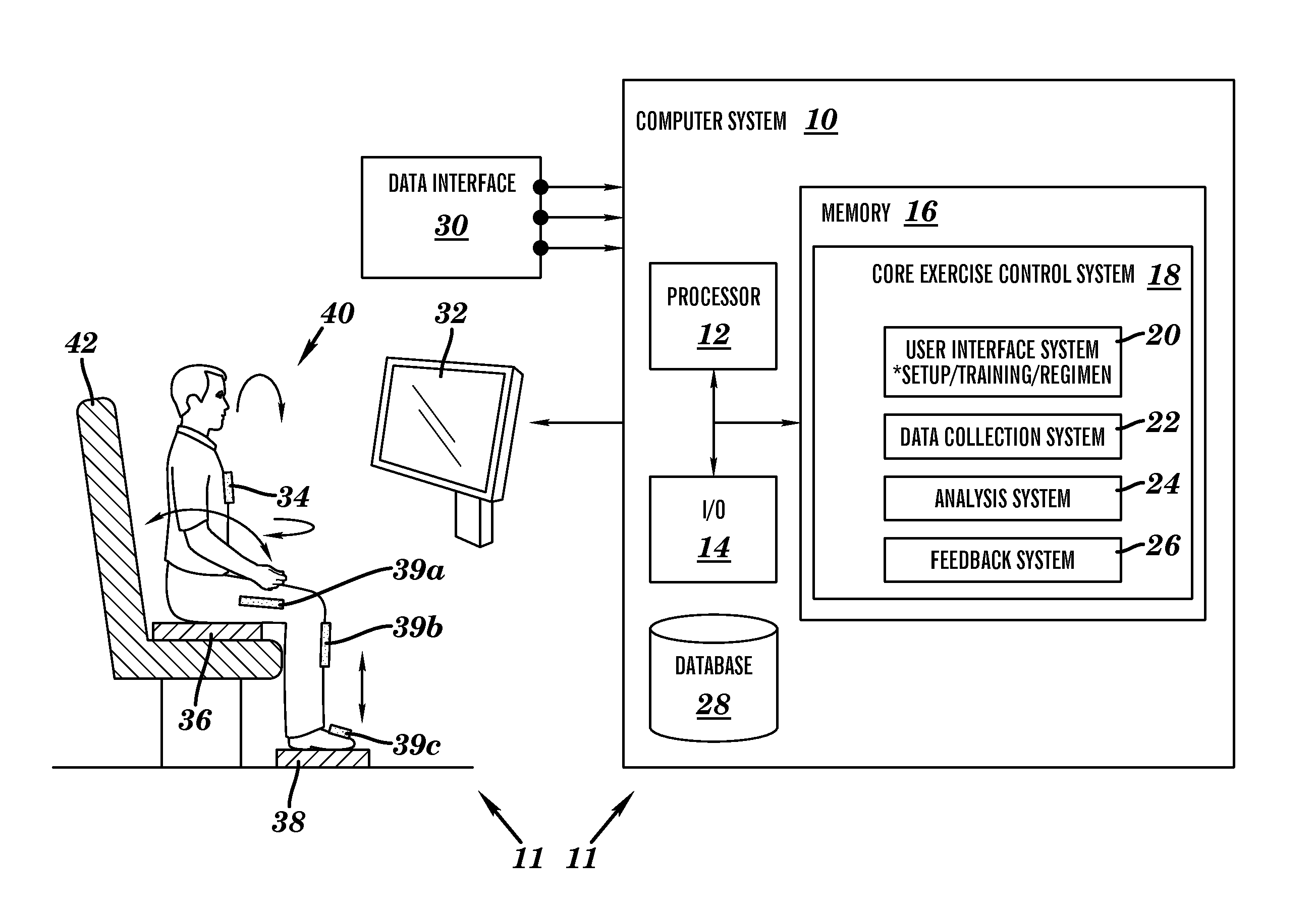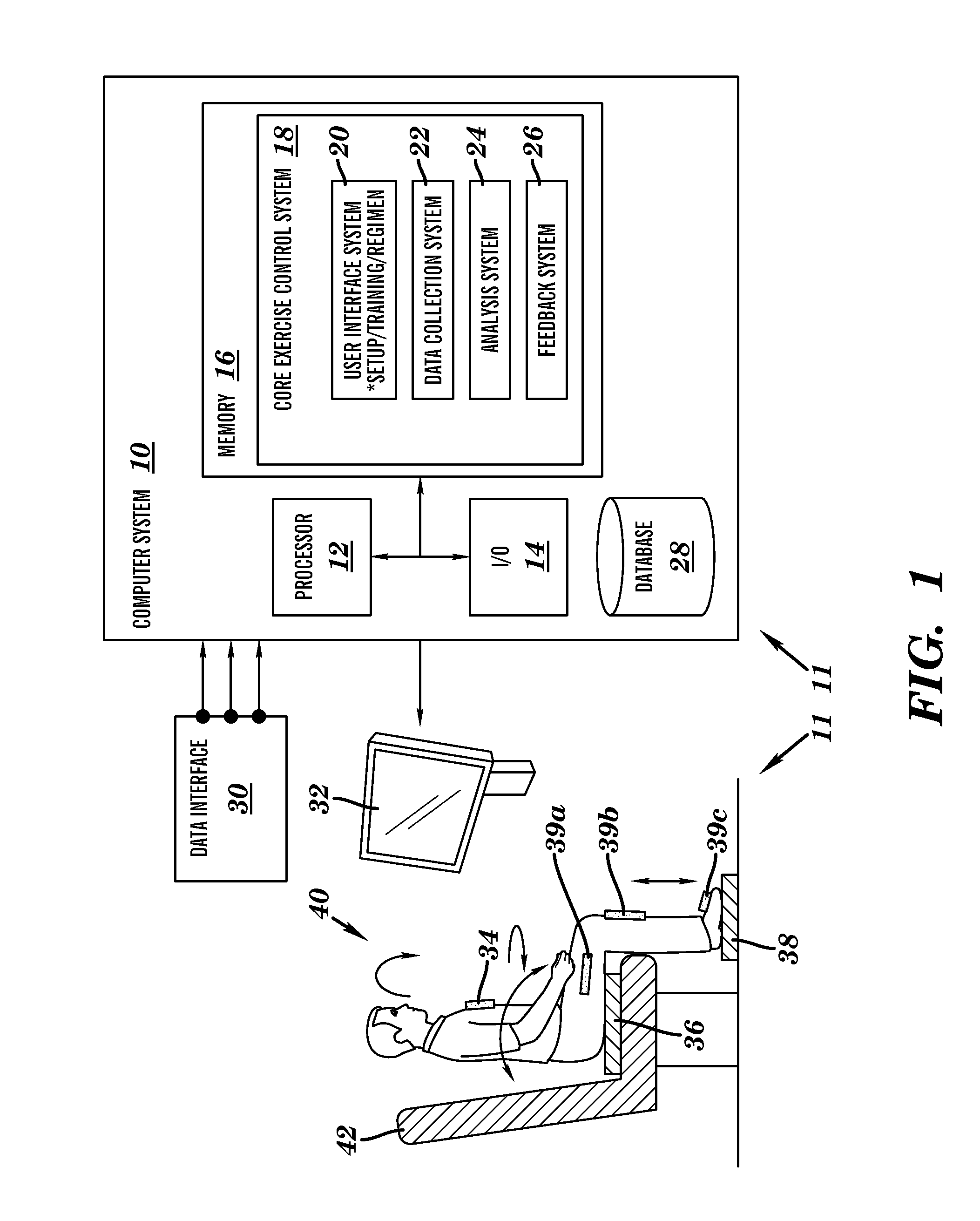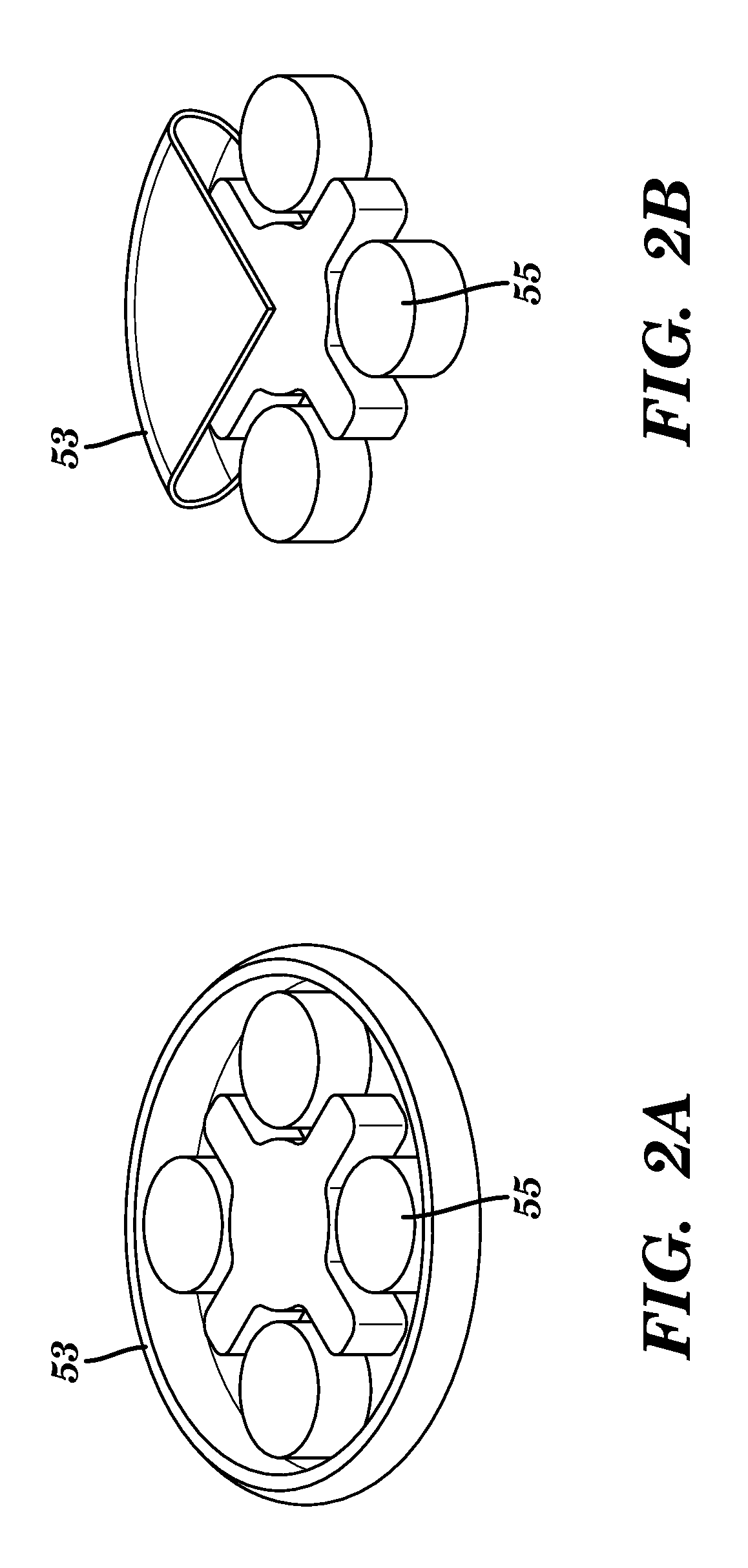Sensor based exercise control system
a technology of exercise control and sensor, applied in the direction of gymnastic exercise, instruments, chairs, etc., can solve the problems of affecting and yearly costs can reach as high as $600 billion per year, so as to facilitate the exercise of core muscles
- Summary
- Abstract
- Description
- Claims
- Application Information
AI Technical Summary
Benefits of technology
Problems solved by technology
Method used
Image
Examples
Embodiment Construction
Overview
[0019]The present invention provides a sensor based feedback system and method for addressing lower back pain by isolating and strengthening core musculature, including “intrinsic” muscles in the lower back, such as the lumbar multifidi. The invention is based on the theory that lower back pain is often the result of dysfunctional lumbar multifidi, which in turn causes the user to compensate by using other “extrinsic” muscle groups. That is, dysfunction of the intrinsic musculature, which normally stabilizes the lumbar spine, forces the prime movers or locomotive muscles to become reflexively hypertonic to compensate. The most commonly noted compensatory musculature in lumbo-pelvic derangement includes the hamstring, piriformis, erector spinae, psoas, and quadratus lumborum. Damage or misuse of the multifidi leads to compensation by the muscles previously mentioned, and may cause abnormal motion (or alignment) of the spine. Abnormal motion or alignment of the spine has been ...
PUM
 Login to View More
Login to View More Abstract
Description
Claims
Application Information
 Login to View More
Login to View More - R&D
- Intellectual Property
- Life Sciences
- Materials
- Tech Scout
- Unparalleled Data Quality
- Higher Quality Content
- 60% Fewer Hallucinations
Browse by: Latest US Patents, China's latest patents, Technical Efficacy Thesaurus, Application Domain, Technology Topic, Popular Technical Reports.
© 2025 PatSnap. All rights reserved.Legal|Privacy policy|Modern Slavery Act Transparency Statement|Sitemap|About US| Contact US: help@patsnap.com



